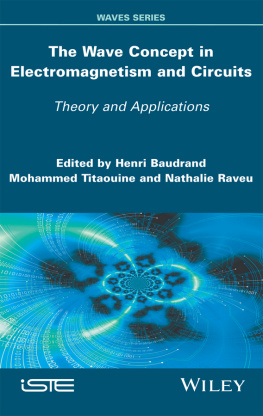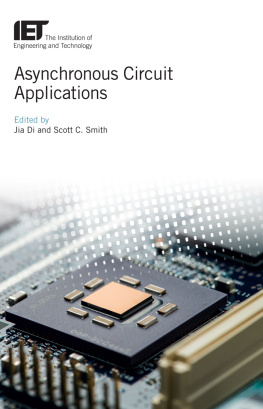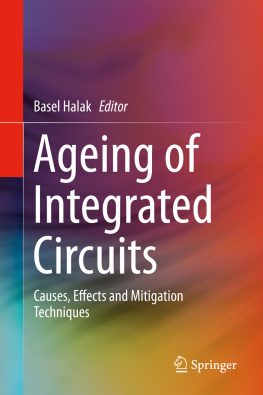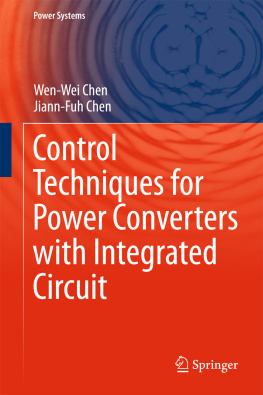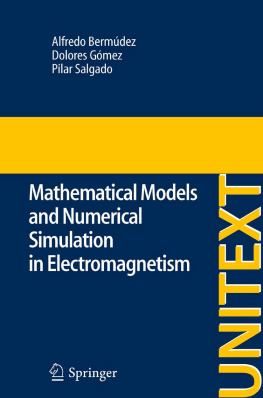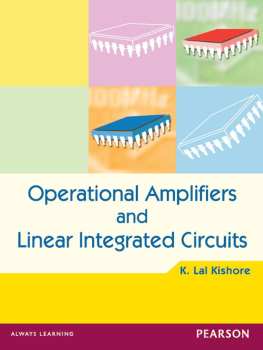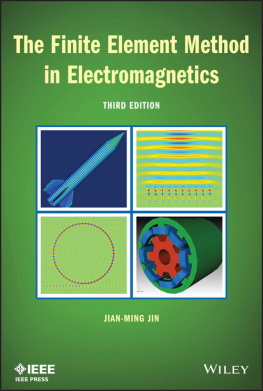
Table of Contents
List of Tables
- 1 General Principles of the Wave Concept Iterative Process
- 5 WCIP Convergence
- 4 WCIP Applied to Substrate Integrated Circuits: Substrate Integrated Waveguide (SIW) and Substrate Integrated Non-Radiative Dielectic (SINRD) Circuits
- 6 Application of WCIP to Diffraction Problems
List of Illustrations
- 1 General Principles of the Wave Concept Iterative Process
- 2 Formulation and Validation of the WCIP Applied to the Analysis of Multilayer Planar Circuits
- 3 Applications of the WCIP Method to Frequency Selective Surfaces (FSS)
- 4 WCIP Applied to Substrate Integrated Circuits: Substrate Integrated Waveguide (SIW) and Substrate Integrated Non-Radiative Dielectic (SINRD) Circuits
- 5 WCIP Convergence
- 6 Application of WCIP to Diffraction Problems
Guide
Pages
Series Editor
Daniel Pasquet
The Wave Concept in Electromagnetism and Circuits
Theory and Applications
Edited by
Henri Baudrand
Mohammed Titaouine
Nathalie Raveu
First published 2016 in Great Britain and the United States by ISTE Ltd and John Wiley & Sons, Inc.
Apart from any fair dealing for the purposes of research or private study, or criticism or review, as permitted under the Copyright, Designs and Patents Act 1988, this publication may only be reproduced, stored or transmitted, in any form or by any means, with the prior permission in writing of the publishers, or in the case of reprographic reproduction in accordance with the terms and licenses issued by the CLA. Enquiries concerning reproduction outside these terms should be sent to the publishers at the undermentioned address:
ISTE Ltd
27-37 St Georges Road
London SW19 4EU
UK
www.iste.co.uk
John Wiley & Sons, Inc.
111 River Street
Hoboken, NJ 07030
USA
www.wiley.com
ISTE Ltd 2016
The rights of Henri Baudrand, Mohammed Titaouine and Nathalie Raveu to be identified as the authors of this work have been asserted by them in accordance with the Copyright, Designs and Patents Act 1988.
Library of Congress Control Number: 2016945696
British Library Cataloguing-in-Publication Data
A CIP record for this book is available from the British Library
ISBN 978-1-84821-959-5
Preface
Summary
The Wave Concept Iterative Procedure (WCIP) was first published in 1995 to model planar circuits and antennas. The first method nearest to the WCIP was harmonic balance (1975) that introduced a successive Fourier Transform and its inverse. The balance between two states, linked by these transforms, is now fundamental to elaborate a model for non-linear electromagnetism problems and high frequency circuits.
After , which introduces the expression and the history of the WCIP, the structures studied are decomposed in elements that link incident and reflected waves, as in the Transmission Line Matrix (TLM) method. The WCIP is quite similar to an integral form of the TLM. One can show that the WCIP is always convergent. After this description of the WCIP and the introduction of its applications in the following chapters, the general principles of the WCIP are presented. They are suitable for the simulation of Meta materials, Substrate Integrated Circuits (SIC), and more generally almost-periodic circuits. As a consequence, dual quantities have to be defined (for instance E and H, V and I, E and J) and two complementary domains (interior and exterior, spatial and spectral) are presented, as in harmonic balance. The study of nano-transistors is also possible with this method.
In , the WCIP is extended to multilayer structures. New relations between waves are introduced for the transformation between two adjacent interfaces. This formulation is obtained from the impedance matrix of a transmission line, and can be used to model real and ideal polarizer in planar structure. It can be demonstrated that an ideal polarizer interface can be expressed directly in the modal domain, reducing significantly the computational time. One of the applications of a multilayer structure with ideal polarizer is a compact microwave amplifier structure. The WCIP has therefore been modified to characterize the amplifier composed of passive and active elements.
In , Frequency Selective Surfaces (FSS) are widely used as low pass filters, high pass filters, stop band filters, pass band filters, etc. Loaded FSSs allow flexibility in the adjustment of transmission characteristics. However, electronically adjusted FSSs also called active FSSs are very important in compensating for the errors of fabrication and for the matching of FSS filters for wireless communication systems. The use of short circuits in the dielectric ring FSS ensure the possibility of producing an FSS with a given resonant frequency only by varying the short circuit positions in the ring. When seeking FSS for multiband applications, FSS with concentric rings and multilevel FSSs can be used. The right choice of the FSS circuit can offer the possibility of exploiting the two perpendicular polarisations with distinct multiband. For enhanced band FSS with better filtering characteristics when switching from pass band to stop band, multilevel FSS is used. Inhomogeneous FSS can be accounted for when a need for a specific non extant dielectric substrate is necessary. In integrated circuits the inhomogeneous case corresponds to physical reality. Anisotropic FSS provides filtering behavior with less power loss, thus its study is of great importance. In the quasi periodic FSS, FSS with loaded short circuits, passive elements and active elements are considered as FSS with defects the coupling between all the elements constituting the defected FSS is accounted for.
In , the circuits in substrate integrated circuits (SIC) technology also present the advantage of being integrable with other technologies such as planar circuits or waveguides. To design such circuits, usual numerical techniques may be inappropriate: the Finite Element Method implies important memory storage while the Integral Method is not able to solve dielectric vias integration. The WCIP is therefore an efficient method for characterizing SIC when vias are placed on a periodic lattice in metallic and dielectric cases. Several example circuits are analysed in this chapter and the computation time is very low.
In has been improved by almost 95% compared to the usual solution for same tolerance on results.
The electromagnetic waves scattered by metallic or inhomogeneous objects is of interest in several areas, such as radar and CEM. In , the formulation of the WCIP in the cylindrical coordinate system is used to study scattering problems and the penetration of electromagnetic waves into multilayer cylindrical structures. In this chapter, the operators inside and outside a cylinder, and the operator ensuring the wave transmission between two coaxial cylinders defined in spectral domain, are used to calculate the incident and reflected waves at each interface of the multilayered cylindrical structure. Finally, the WCIP method is extended to model the scattering of a structure of arbitrary shape in an open environment. The development of the diffraction operator is expanded in cylindrical modal basis in the spectral domain. In fact, the basis functions should be created in the most appropriate coordinate system, suitable to the local geometry of the arbitrary diffraction structure. For a planar circuit, the scattering problem is easily solved by the WCIP method in the Cartesian coordinate system. However, the Cartesian coordinate system becomes inefficient when dealing with non-regularly shaped bodies. A cylindrical coordinate formulation is presented in this section, as a solution to extend the WCIP to scattering of structures of arbitrary shapes.
Next page
